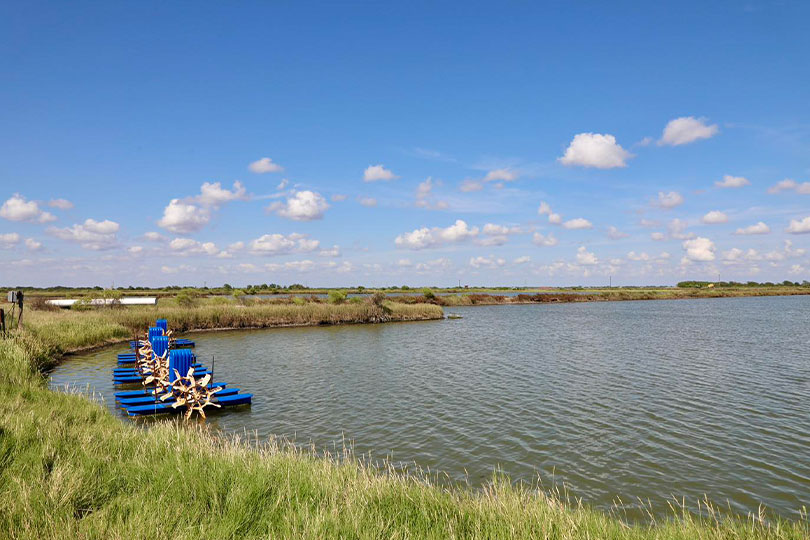By Shelby Shank
Field Editor
Texas aquaculture has shown growth over the past five years, despite federal reports indicating a decline.
The 2023 U.S. Department of Agriculture (USDA) Census of Aquaculture reported a decrease in Texas aquaculture farms and sales. But Dr. Todd Sink, Texas A&M AgriLife Extension aquaculture specialist, said his assessment shows producer numbers have increased.
He attributed the discrepancy to limited participation in the voluntary USDA survey.
According to Sink’s observations, Texas now has 130 to 135 aquaculture producers managing about 6,200 acres of production.
More than 20 of those operations are new oyster farms along the Texas coast, made possible by 2019 legislation that legalized oyster mariculture.
“Prior to 2019, oyster mariculture was not allowed in Texas,” Sink said. “Now, the number of oyster farms is growing so fast that the state’s two oyster hatcheries are struggling to meet the demand for seed stock.”
Although catfish often comes to mind when Texans think of aquaculture, Sink said the industry is much more diverse. Producers raise baitfish, ornamental and food fish species like pinfish, fathead minnow, koi, tilapia, shrimp, red drum and hybrid striped bass.
Red drum and hybrid striped bass alone account for roughly $20 million of Texas’ annual farm-gate sales, and Texas leads the nation in production of these species, according to Sink.
“There are only around 12 red drum and hybrid striped bass producers in the state, and they’re producing as much as the catfish industry in terms of value and quantity,” Sink said. “Those fish are considered a higher-value product.”
Currently, red drum brings $5.50 to $5.70 per pound compared to catfish prices that average between 80 centsand $1.20 per pound for the past two decades.
“If you go to a restaurant or supermarket anywhere in the U.S. and order red drum, there’s a very high chance it’s a farm-raised Texas product,” Sink said.
He noted that tariffs on imported seafood have also benefited local producers.
“Many producers are now getting orders from companies that once sourced only from China, Vietnam or Mauritius,” Sink said. “Foreign seafood imports have always been a challenge for the industry.”
Overall, farm numbers and sales for sportfish and food fish remain steady.
“We’re also seeing food fish producers who previously specialized in a single species, such as catfish, hybrid striped bass or red drum, diversifying the species they grow to better protect themselves from any production failures such as disease, freeze events or market collapses,” he said.
Producers also are joining together to form larger cooperative farms.
“It may only be two producers, or it may include eight, but they are partnering,” he said. “That offers buying power, better market access and supply, and species diversification.”


Leave A Comment